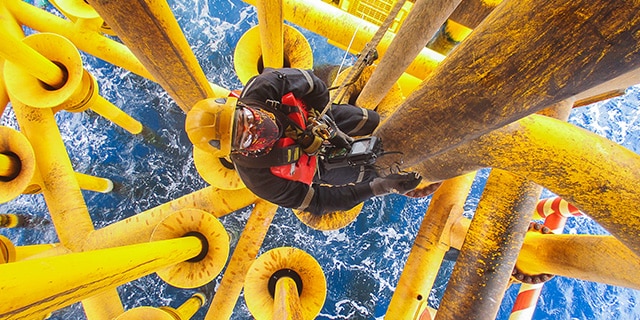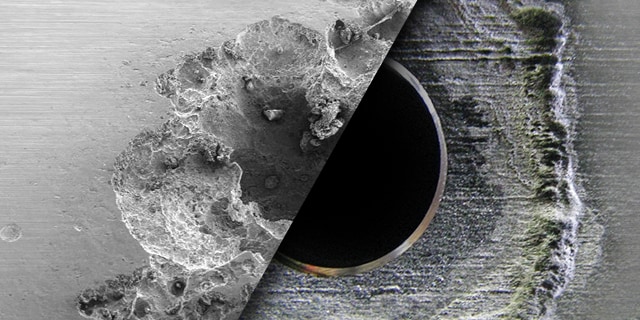: IOGP Specification S-716

NEWS-The International Association of Oil & Gas Producers (IOGP) released an update to publication S-716 Specification for Small Bore Tubing & Fitting in March 2021
This specification was prepared under Joint Industry Programme 33 (JIP33) "Standardization of Equipment Specifications for Procurement" organized by the International Oil & Gas Producers Association (IOGP) with the support from the World Economic Forum (WEF). Companies from the IOGP membership participated in developing this specification to leverage and improve industry level standardization globally in the oil and gas sector. The work has developed a minimized set of supplementary requirements for procurement, with life cycle cost in mind, resulting in a common and jointly agreed specification, building on recognized industry and international standards.
The key highlights as below:
- Intermixing and interchanging of tube fittings from different manufacturers are not acceptable
- Compression tube fittings shall be flareless, double-ferrule type
- 6HN is mentioned as acceptable material providing “Increased resistance to pitting, crevice corrosion and chloride-induced stress cracking when compared to Alloy 254”
- Specification enables Engineered Combinations to be used. The tubing alloys shown compatible with SS 316 tube fittings are 317/317L, Alloy 254, Alloy 6HN, Tungum, Alloy 825, Alloy 904L
- The tubing system shall be installed by personnel who have been certified by the fittings manufacturer's approved product training program or equivalent industry training program including hands-on assembly
- Recommended tubing hardness HRB 80 is listed for many alloys, for higher alloys a greater recommended hardness. No minimums below the recommended hardness are specified. A sub-note allows higher hardness if compatibility between tubing and tube fittings is demonstrated.
Table 1 — Minimum wall thickness for tubing
| Metric units c | Imperial units c | ||
|
Tube outside diameter d (mm) |
Minimum nominal wall thickness a, b (mm) |
Tube outside diameter d (in) |
Minimum nominal wall thickness a, b (in) |
| 3 | 0.8 | 1/8 | 0.028 |
| - | - | 3/16 | 0.049 |
| 6 | 1.2 e | 1/4 | 0.049 e |
| 8 | 1.2 | 5/16 | 0.049 |
| 10 | 1.2 | 3/8 | 0.049 |
| 12 | 1.2 | 1/2 | 0.049 |
| 14 | 1.5 | - | - |
| 16 | 1.5 | 5/8 | 0.065 |
| 18 | 1.5 | 3/4 | 0.065 |
| 22 | 2.2 | 7/8 | 0.083 |
| 25 | 2.2 | 1 | 0.083 |
| 30 | 2.8 | 1 1/4 | 0.109 |
| 38 | 3.5 | 1 1/2 | 0.134 |
| 50 | 5.0 | 2 | 0.180 |
| a Pressure ratings of different wall thicknesses shall be determined based on the design criteria defined in ASME B31.3. b Higher wall thicknesses can be specified by the user or can be selected by the package supplier or contractor where required. c Tube sizes indicated for imperial and metric shall not be treated as a direct conversion from imperial to metric. d The tube sizes indicated are commonly available for SS 316 or SS 316L tubes. Some tube sizes may not be available for other materials such as 6 Mo, 25 Cr. Duplex, Alloy 625, Alloy 825 and Titanium Gr. 2. e For pneumatic signal lines, 6 mm tubing diameter with 1 mm WT (1/4 in tubing diameter with 0.035 in WT) is acceptable. |
|||
Table 2 — Material Selection
| Tube | ||||
| Material | ASTM grade | UNS number | Recommended tube hardness b |
Typical applications and limitations c |
| 316 or 316L | A269/A632 | S31600/S31603 | HRB 80 | 1) Locations where chloride build up do not occur or use in indoor conditioned environment for services such as air, hydraulic, nitrogen, hydrocarbons, fresh water, and glycol 2) Maximum temperature limits (internal/external) to be limited 60 °C (140 °F) where chloride induced stress corrosion cracking may occur 3) Maximum temperature limits can be extended up to 450 °C (842 °F) for non-marine, non-corrosive environments and without use of clamps 4) Instrument air, HVAC and inert gases 5) Dual certified tubes can also be used 6) Tubing with minimum 2,5 % Molybdenum content can be used to minimize chloride induced stress corrosion cracking and pitting corrosion |
| 317 or 317L | A269/A632 | S31700/S31703 | HRB 80 | 1) Dual certified 317/317L in lieu of 316/316L can be used to enhance resistance to stress corrosion cracking |
| Alloy 254 (6Mo) | A269 | S31254 | HRB 80 | 1) External marine atmospheric environments: maximum operating temperature limits: 100 °C to 120 °C (212 °F to 248 °F) 2) External corrosive environment, chloride stress corrosion cracking, pitting and crevice corrosion 3) Aerated chlorinated seawater system with crevices: maximum operating temperature limit: 20 °C (68 °F) 4) Sour service a |
| Alloy 6HN | A269 | N08367 | HRB 80 | 1) External marine atmospheric environments: maximum operating temperature limits: 100 °C to 120 °C (212 °F to 248 °F) 2) Severe corrosive environment, chloride stress corrosion cracking, pitting and crevice corrosion 3) Chlorinated seawater system with crevices: maximum operating temperature limit: 20 °C (68 °F) 4) Increased resistance to pitting, crevice corrosion and chloride-induced stress cracking when compared to Alloy 254 5) Sour service a |
| 25Cr Super Duplex SS | A789/A789M | S32750/S32760 | HRC 32 | 1) Marine environment 2) Sour service a 3) Severe corrosive environment 4) Chlorinated seawater system with crevices: maximum operating temperature 20 °C (68 °F) 5) External marine atmospheric environments: maximum operating temperature limits: 90 °C to 110 °C (194 °F to 230 °F) |
| Alloy 400 | B165 | N04400 | HRB 75 | 1) Resistance to acid, alkali, seawater, organic intermediates 2) Marine environment 3) Chemical plants, including environments using sulfuric acid and hydrofluoric acid 4) Severe internal/external corrosive environment 5) Maximum operating temperature limits: 150 °C (302 °F) for external chloride stress corrosion cracking |
| Copper Alloy | B706 | C69100 | HRB 80 | 1) Marine environment 2) Gas pipework systems (oxygen and inert gases) 3) Cryogenic applications 4) Not to be used when fluids are contaminated with H2S & mercury, acetylene, ammonia 5) Sensitive to chlorine containing environments |
| Alloy 625 | B444 | N06625 | HRB 93 | 1) Marine environment 2) Chlorinated seawater system with crevices: maximum operating temperature 30 °C (86 °F) 3) Sour service a 4) Chlorides on external environments 5) Glycol |
| Alloy 825 | B423 | N08825 | HRB 90 | 1) Analyzer sample transport tubing with the exception of continuous emission monitoring systems, moisture analyzer 2) Treated sea water 3) Phosphoric acid, sour gas and oil wells 4) Sour service a 5) No restriction on external chloride stress corrosion cracking |
| Titanium Gr.2 | B338 | R50400 | HRB 85 | 1) Sodium hypochlorite application for operating temperature up to 50 °C (122 °F) 2) Chlorinated seawater system with crevices maximum operating temperature 85 °C (185 °F) 3) Sour service a 4) External marine atmospheric environments maximum operating temperature limits: 100 °C to 120 °C (212 °F to 248 °F) |
| Alloy C276 | B622 | N10276 | HRB 90 | 1) Marine environment 2) HF Acid non-aerated 3) Corrosive conditions 4) Oxidizing and reducing chemicals (e.g. ferric/cupric chlorides, chlorine, formic acids, and hypochlorite solution) 5) Sour service a 6) Chlorinated seawater system with crevices: maximum operating temperature 50 °C (122 °F) 7) No restriction on external chloride stress corrosion cracking |
| Alloy 904L | A269/B677 | N08904 | HRB 80 | 1) Marine environment (maximum ambient temperature limits up to 30 °C (86 °F) c 2) Chlorinated seawater system with crevices: maximum operating temperature 10 °C (50 °F) 3) Sour service a |
| Alloy 20 | B729 | N08020 | HRB 95 | 1) Sulfuric acid, caustic, sour gas, acid gas, organic acids, chlorinated hydrocarbons, sludge acids 2) Sour service a |
| Copper | B68/B75 | C12200 | 60 on Rockwell 15T scale |
1) Steam tracing 2) HVAC tubing |
| a The definition of sour service remains the responsibility of the end user. Tubes used in sour service, shall meet the requirements in accordance with ANSI/NACE MR0103 or ISO 17945 or ANSI/NACE MR0175/ISO 15156, Parts 1 to 3 b If hardness compatibility between tubing and tube fittings can be demonstrated, higher tubing hardness above the recommended hardness can be used c Tubing clamp design must be selected based on maximum operating temperature limits of the tube to avoid corrosion |
||||
Table 3 — Material Compatibility
| Tube | Compatible material | |||
| Material a | ASTM grade | UNS number | Tube fitting a, b | Instrument isolation valves a, b |
| 316/316L | A269/A632 | S31600/S31603 | SS316 | SS 316 |
| 317/317L | A269/A632 | S31700/S31703 | SS316 | SS 316 |
| Alloy 254 (6Mo) | A269/A632 | S31254 | 6Mo or SS316 |
6Mo or SS 316 |
| Alloy 6HN | A269/A632 | N08367 | Alloy 6HN or SS 316 |
Alloy 6HN or SS 316 |
| 25Cr Super Duplex SS | A789/A789M | S32750/S32760 | 25Cr Super duplex SS | 25Cr Super duplex SS |
| Alloy 400 | B165 | N04400 | Alloy 400 | Alloy 400 |
| Copper Alloy | B706 | C69100 | SS 316 | SS 316 |
| Alloy 625 | B444 | N06625 | Alloy 625 or Alloy C 276 | Alloy 625 or Alloy C 276 |
| Alloy 825 | B423 | N08825 | Alloy 825 or SS 316 | Alloy 825 or SS 316 |
| Titanium Gr.2 | B338 | R50400 | Titanium Gr. 2 | Titanium Gr. 5 |
| Alloy C276 | B622 | N10276 | Alloy C276 | Alloy C276 |
| Alloy 904L | A269/B677 | N08904 | SS 316 | SS 316 |
| Alloy 20 | B729 | N08020 | Alloy 20 | Alloy 20 |
| Copper | B68/B75 | C12200 | Brass B16/B453 or SS 316 | Brass B16/B453 or SS 316 |
| a SS 316 material shall not be used in Middle East marine environments b Temperature and environmental limits of the lower grade material shall be applied for material selection when dissimilar material combination is selected within a tubing run |
||||
Table 4 — Spacing for supports
| Spacing for tubing supports | |
| Tube outside diameter mm (in) | Maximum span between supports mm (in) |
| < 6 (<1/4) | 400 (16) |
| 6 to 10 (1/4 to 3/8) | 600 (24) |
| 12 to 22 (1/2 to 7/8) | 900 (35) |
| 25 to 32 (1 to 1 1/4) | 1400 (55) |
| 38 (1 1/2) | 2100 (83) |
| 50 (2) | 2100 (83) |
Find more information about Material Selection

Material Selection Guide
Understand the factors that contribute to corrosion and the materials that help fight it.
